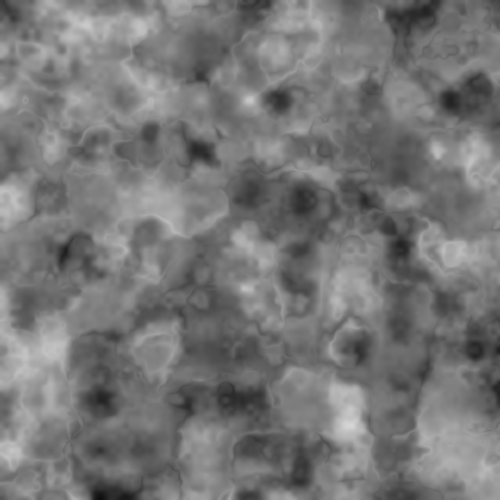 Now that my AU Library is out (in beta, anyway) I thought I’d show how to write the noise blending code from an earlier post, but this time using the AU Library. Although I do a little more work in
Now that my AU Library is out (in beta, anyway) I thought I’d show how to write the noise blending code from an earlier post, but this time using the AU Library. Although I do a little more work in setup(), the draw() is much simpler, and the results are much nicer.
Here’s what’s changed:
- I replaced the 3D array of floats with a single
AUMultiFieldobject. - I replaced the first two lines of
draw()(which were pretty messy) with simple calls to anAUStepperobject. - I replaced the call to
curve()with a call to a per-pixelAUCurveobject. This means we move through the curves at a smooth, constant pace. - These changes mean that the noise fields and a couple of other variables no longer need to be global. The only globals are the
AUStepperand theAUCurveobjects.
I could scrunch the code down even more by doing away with the AUMultiField that holds the noise. After all, there’s really no reason to compute it and save it since it’s only used once. The expressions to get the noise could be rolled right into each AUCurve constructor. But I think this is a little easier to follow, and it demonstrates how to use AUMultiField to hold this kind of data, so I left it this way.
import AULibrary.*;
// A little sketch to demonstrate the multiple noise field interpolation technique.
// No guarantee or warranty of any kind. You may use and distribute this freely.
// Andrew Glassner, September 16, 2014
AUStepper Stepper; // tracks our progress through the fields
AUCurve[][] NoiseCurves; // one curve of noise per pixel
void setup() {
size(500, 500);
AUMultiField noiseArrays; // list of noise fields
int numFields = 4; // how many fields you want to use. Must be > 0
int cycleLength = 25; // number of frames to get from one field to another
Stepper = new AUStepper(numFields, cycleLength); // create the stepper
Stepper.setAllEases(AULibrary.EASE_LINEAR);
noiseArrays = new AUMultiField(this, numFields, width, height);
for (int n=0; n<numFields; n++) { // for each field n,
for (int y=0; y<height; y++) { // look at all the pixels
for (int x=0; x<width; x++) {
float noiseX = (x*.02) + (n*width); // .02 was chosen by eye; it's
float noiseY = (y*.02) + (n*height); // not too simple or busy
noiseArrays.fields[n].z[y][x] = noise(noiseY, noiseX); // save this value
}
}
}
NoiseCurves = new AUCurve[height][width];
for (int y=0; y<height; y++) { // build a curve for each pixel
for (int x=0; x<width; x++) {
float[][] knots = new float[numFields][1]; // the data for this curve
for (int n=0; n<numFields; n++) { // fill in with this curve's data
knots[n][0] = noiseArrays.fields[n].z[y][x];
}
NoiseCurves[y][x] = new AUCurve(knots, 1, true); // 1D geometry, closed curve
}
}
}
void draw() {
Stepper.step();
float alfa = Stepper.getFullAlfa(); // how far we are into the curves
loadPixels();
for (int y=0; y<height; y++) {
for (int x=0; x<width; x++) {
float v = NoiseCurves[y][x].getX(alfa); // get value from this curve
pixels[(y*width)+x] = color(255 * v); // save noise value as a shade of gray
}
}
updatePixels();
}
